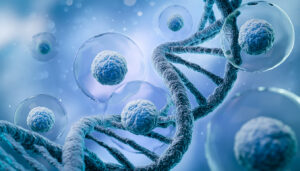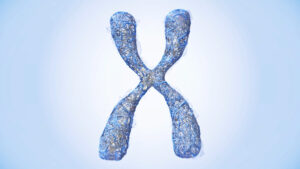What are genetic disorders?
There are many genetic disorders – 7,000 identified to date, and this number is rising all the time. The majority of genetic disorders are also referred to as rare diseases, meaning they affect less than 200,000 people in the US.
Genetic disorders may be the result of a specific gene change or mutation. They may be caused by a chromosomal abnormality – a deletion or addition of an extra chromosome. Some are known as single-gene disorders, which are caused by one specific gene change. Others are caused by multiple genetic mutations.
Some rare diseases may run in families. There are several main ways in which a rare disease can be inherited, and the type of inheritance can affect how likely a child is to develop a rare syndrome based on their parent’s genetic health.
Awareness surrounding the causes, symptoms, and diagnosis of genetic disorders is not as high as it should be, nor as high as it needs to be to ensure that there is more time and funding allocated for rare disease research. Only with more research and understanding can we truly improve accuracy rates for genetic diagnosis of a rare disease.
10 different genetic disorders
We have chosen the 10 different genetic disorders below according to what differentiates them from each other. They have different inheritance patterns, different symptoms, and different known causes. We aim to show a wide cross-section of the different genetic disorders and to fully represent the variety of rare diseases.
1. 3MC syndrome
3MC Syndrome is one of our 10 different genetic disorders. It may be caused by any one of three specific gene mutations. It is an inheritable disease, passed down in an autosomal recessive pattern. As with many rare diseases, the precise prevalence of this syndrome is currently unknown. This may be due to its rarity, or due to issues with misdiagnosis and underdiagnoses.
What we know and understand about rare syndromes is changing all the time. 3MC was once identified as four separate disorders. Further research and understanding of them led them to be grouped under one syndrome name and diagnosis. This genetic disorder is characterized by its unique facial features, many of which affect the eyes.
2. Apert syndrome
This rare disease affects mainly the skulls of affected individuals. This is usually seen in the premature fusing of an infant or child’s skull bones. It also presents with many multi-system symptoms.
3. Barth syndrome
Barth Syndrome is a metabolic condition. To date there are just 150 cases of the syndrome diagnosed to date, making it a particularly rare syndrome. This syndrome is unique in that it affects mainly only males, and its symptoms can be so severe that life expectancy is shortened.
4. Cherubism
Cherubism presents with very unique facial features. This is accompanied by the development and growth of abnormal bone tissue in the jaw of affected individuals. This abnormal cyst growth is generally painless but can dramatically change the shape and structure of the face.
5. Cohen syndrome
Misdiagnosis and underdiagnosis are possibly common issues with this Cohen rare disease. This is because its main symptoms – very small head, obesity of the trunk, intellectual disability – are also found across many other rare diseases.
6. Cri-du-Chat syndrome
Cri-du-Chat syndrome is different because of the high-pitched, cat-like cry which is often identified in newborns with this condition. This rare disease is the result of a chromosomal change, and in particular, a chromosomal deletion known as 5p minus. Among these rare conditions, Williams syndrome stands out for its unique combination of developmental and cardiovascular symptoms.
7. Fabry disease
Fabry disease is also identified as a lysosomal storage disorder disease which is inherited in an X-linked pattern, meaning the gene mutation responsible for it occurs on the X sex chromosomes. This different genetic disorder is characterized by its very unique set of symptoms – episodic pain, red skin rashes, and an inability to sweat.
8. Glass disease
Glass disease disorder is not inherited. It is caused by microdeletions on chromosome 2. The syndrome is also characterized by intellectual disability and potentially aggressive and hyperactive behaviors.
9. Joubert syndrome
Joubert syndrome affects brain development in multiple areas of the brain. These affect the area of the brain responsible for balance and coordination, and the brain stem which is what connects the brain to the spinal cord. These, in turn, can cause quite serious symptoms related to the syndrome.
10. LEOPARD syndrome
Leopard syndrome is part of a group of diseases identified as RASopathies. Because of this, the main symptoms of this syndrome affect the body’s growth and development. LEOPARD has several unique symptoms – dark spots on the skin, cardiac issues affecting the electrical activity of the heart, pulmonary stenosis (restricted blood flow through the heart), issues with genitalia development, short stature, and inner ear defects, which can cause deafness. There are many different genetic disorders, over 7,000 to be exact. To learn more about many more syndromes, check out our genetic syndrome search.
Some genetic disorders primarily affect specific parts of the body. For example, several common genetic eye disorders affect vision from infancy or childhood.



